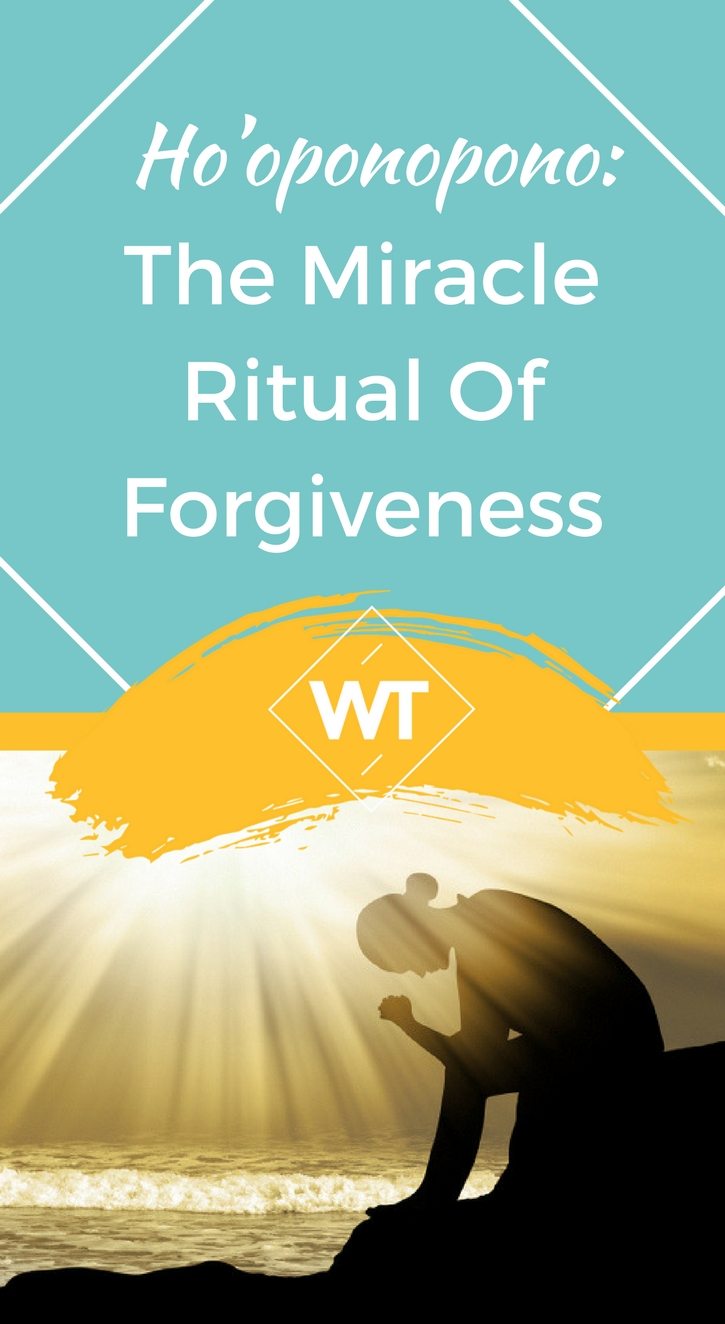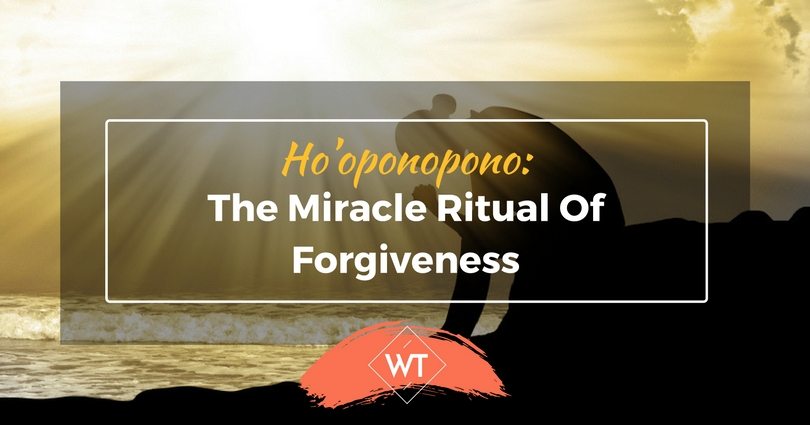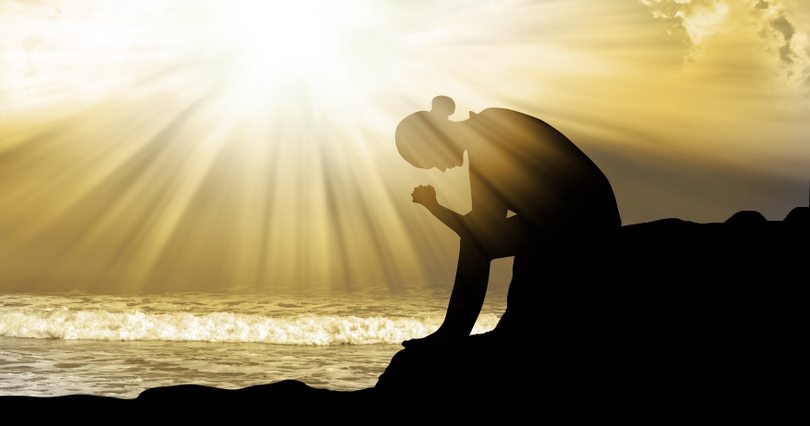Ho’oponopono: The Miracle Ritual Of Forgiveness

Afflicting emotions can weigh heavy on our life—anger, resentment, hurt, anguish, to mention just a few. They can lead us down a very dangerous path in which we close ourselves to life, friends, loved ones and most of all ourselves. These difficult emotions do not have power over us because they come fast and hard but because they can linger for many years, even a lifetime.
This is when they turn into pain. A strong burst of anger is bad but carrying it for several decades is a living hell. When we keep this pain in our heart for too long—by repressing it or reacting to it in self-destructive ways—it ends up defining us.
It closes paths we were otherwise meant to follow and it changes the way we feel, look and react to things and people around us. It distorts our self-image and can also cripple us, causing reverberations across our mental and physical health. Now we are also starting to understand that it changes our DNA.
Enter the Ho’oponopono ritual
Ho’oponopono is an ancient Hawaiian practice of reconciliation and forgiveness. The practice was brought to wider public attention through the incredible story of Hawaiian therapist Dr. Ihaleakala Hew Len. It is said that he succeeded in healing an entire ward of criminally insane individuals without ever meeting them face to face.
He reviewed their files individually and then applied his own version of the ancient practice he calls ‘Self I-Dentity Through Ho’oponopono’ (SITH).
The essence of the Ho’oponopono ritual is that of cleansing or cutting loose our link to the troubling past and reconciling broken relationships with others (and the self) through acknowledging the transgression and problems and ultimately repenting and also forgiving.
The result is nothing short of a miracle as it opens up the space for accepting and allowing the pain but then letting it go thus opening even more space where love, life and the creative energies can flow through again. This is essentially a description of what healing is.
The traditional setting
The traditional practice of the ritual usually takes place among family members who are in some kind of irresolvable or entangled disagreement and where relationships have been severed or damaged. Normally an elder of the family group or a respected figure conducts the ceremony.
A prayer is said and the members then discuss and acknowledge the problems without holding on to them. Moments of silence and contemplation are held to give space for the members to reflect on their pain or conflict. Then there is confession, repentance and forgiveness. In the end a feast is held to celebrate the reconciliation.
At the heart of the ritual are four stages or parts and its strength lies in that these stages or parts can be carried out in their simplest forms and even privately in our own personal space.
1. Repentance: ‘Sorry’ is not the hardest word
It is actually the softest, sweetest and kindest of words that melt all barriers around the heart and gives warmth and courage when it is said to someone or even when just felt in our heart. A simple sorry has the power to change the whole energy around a situation and break away all the drama. All the fight, argument and commotion can be dismantled just by this simple word.
To say sorry is also an act of confession since it recognizes a fault and shows repentance at the same time. The real power of saying I’m sorry is seemingly a paradoxical one because it can be said (and has tremendous effect) even when we are, or feel that we are, the victims of a situation.
I have heard many personal stories of people who were at the receiving end of abuse or transgression and kept this heaviness and pain in their heart for many years. A marriage gone sour is the perfect example. But then something beyond words happens.
The victim (or perceived victim), decides to say sorry to the other person, in writing, face to face or simply in their heart. What happens after is that the old frozen landscape begins to melt away and the healing process kicks in.
2. To ask for or offer forgiveness
The act of forgiveness is one of the most powerful acts of human kindness—it cleanses old energy patterns and karma wounded around broken relationships. It mobilizes new and fresh positive energies of love, hope and kindness. To forgive takes strength and courage but it ultimately gives back a greater strength and power.
Anger and hatred consumes your energies until ultimately your health and whole life balance take their toll. Forgiving gives you back that vital energy we are all connected to but that we had previously chosen to shut off by keeping ourselves in the energy field of anger.
If you have a broken relationship with a person, whether in your present or past, that is created a lot of pain and suffering, ask for forgiveness personally or in your heart (if face to face is not possible) and/or offer your forgiveness. Then wait and see how this changes your life!
3. The power of gratitude: Saying ‘Thank You’ from the heart
I have written about the power of gratitude many times before. Its importance can never be overstated. To say thank you to someone or something (such as things happening in your life) brings forth hundreds of blessings. Through gratitude you instruct your heart to open and receive more love, happiness, gifts, support or whatever you need to move forward.
Saying thank you to a person you have a broken relationship with can change the field around that relationship to allow both persons to accept more of each other. Saying thank you recognizes the good (and goodness) coming from someone or something. It gives hope and encouragement both to the person saying it and receiving it. Gratitude is a confirmation and reinforcement of that which is positive and so creates more space for more of it to come forth and be received.
4. Love: The ultimate magic
Repentance, forgiveness and gratitude are powerful healers but love is the miracle worker. It is where the real magic happens. To say I love you, even to that person who had been on your black list for a long time creates things beyond your comprehension because it does not operate from your old patterns of thought or emotions but through a broader connection to the mystery of life around you.
To love is an act of trust and abandonment. It is surrendering your fears, worries and pain to a higher frequency and power. If you give yourself the change to do this, you are giving yourself the change to start living again and reconciling with your entire being and with life.









Leave a Reply